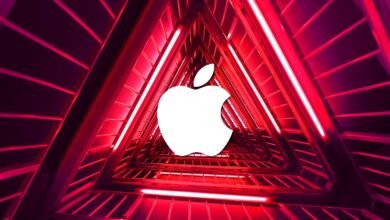Mastering AI & Human Control in Google Ads

▼ Summary
– Google Ads has transformed into an AI-driven platform where automation governs bidding, targeting, and budget allocation, offering efficiency and scale.
– Automation requires human oversight to prevent wasted spend and misaligned campaigns, as it lacks strategic understanding of client goals and market nuances.
– Accurate measurement is critical; automation must be trained on meaningful business outcomes like revenue, not just shallow signals like clicks, to align with growth goals.
– Campaigns need clear strategic separation, such as using Search for high-intent queries and Performance Max for prospecting, to prevent automation from chasing easy but less valuable wins.
– Human intervention is essential during sudden changes like seasonality or tracking errors, using tools like scripts and guardrails to correct the algorithm and prevent drift.
The landscape of Google Ads has undergone a dramatic transformation, shifting from a manual, keyword-centric platform to one deeply integrated with artificial intelligence and machine learning. Today’s advertiser navigates a system where automation governs bidding, audience targeting, creative optimization, and budget management. While this shift offers unprecedented efficiency and scale, it demands a new level of strategic oversight to ensure these powerful tools align with genuine business objectives rather than simply chasing easy metrics.
Automation delivers significant advantages, including the ability to manage complex campaigns at scale, implement sophisticated bidding strategies, and launch initiatives more rapidly. For marketing teams stretched thin or overseeing numerous accounts, these capabilities are invaluable. However, granting AI complete control without establishing clear parameters can lead to inefficient spending, poor ad placements, and campaigns that optimize for the wrong outcomes. The technology excels at execution but lacks an inherent understanding of client-specific goals, market subtleties, and overarching business strategy.
Effective measurement is the foundation for successful automation. The algorithms learn from the conversion data they receive. Incomplete tracking forces Google to rely on modeled conversions, which provide estimates that may not align with actual results in a company’s CRM system. Another critical consideration is conversion lag; since Google attributes conversions to the click date, lead generation campaigns can appear to underperform during the week even as conversions are still being recorded. Adding the “Conversions (by conversion time)” column provides a clearer picture of this delay.
Creating custom columns to monitor performance against targets offers immediate insight. For Cost-Per-Acquisition (CPA) goals, the formula `(Cost / Conversions) – Target CPA` reveals how far a campaign is deviating from its goal. A positive result indicates spending above the target, often a sign that Smart Bidding is being constrained by overly strict settings. A negative result shows the campaign is performing under target, suggesting the automation is effective and potentially ready for increased budget. Similarly, for Return on Ad Spend (ROAS), the formula `(Conversion Value / Cost) – Target ROAS` provides a clear efficiency reading. To maximize value, automation should be trained on meaningful business outcomes like revenue, profit, or qualified leads, not just superficial actions like clicks.
Establishing clear boundaries for automated campaigns is essential for peak performance. When different types of traffic, such as brand and non-brand queries or new and returning customers, are combined within a single campaign, the AI will naturally gravitate toward the easiest conversions. This is where human strategy remains vital. Search campaigns are ideal for high-intent keywords where precise control over ad copy and bids is critical, while Performance Max campaigns are better suited for prospecting and reaching audiences across Google’s network. Without this separation, Performance Max can cannibalize search campaign volume. Independent analysis has shown that in overlapping cases, Search campaigns frequently deliver superior performance, underscoring the need for strategic segmentation.
Even with the right setup, automation requires active supervision. It won’t flag its own mistakes, so advertisers must proactively monitor signals. Bid strategy reports reveal which audience signals the AI is prioritizing; reliance on irrelevant categories can indicate poor-quality conversion data. The recent integration of Performance Max search terms into the standard Search Terms report is a major step forward, providing transparency into the actual queries driving traffic and allowing for quick addition of negative keywords. Impression share metrics also tell a story: a high lost share due to rank often points to CPA or ROAS targets that are too restrictive, causing the system to bid too conservatively.
Automation models are built on historical data, making them vulnerable to sudden contextual shifts. During events like Black Friday, conversion rates surge, and the algorithm may continue overvaluing traffic for days after the event ends. Similarly, tracking errors, such as duplicate conversions, can mislead the system into overspending. This is why tools like seasonality adjustments and data exclusions are critical; they provide the necessary corrections when the algorithm’s model becomes unreliable.
Auto-applied recommendations are often counterproductive to campaign goals. While presented as a way to improve account health, they frequently broaden match types, add irrelevant keywords, or change bid strategies without strategic context. These recommendations are generally optimized for spending efficiency across Google’s network, not for maximizing an individual advertiser’s profitability. The most prudent approach is to disable auto-apply and manually review suggestions, implementing only those that align with a defined strategy.
Simple scripts can serve as vital safety nets. The official Google Ads Account Anomaly Detector alerts you to significant deviations in spend or conversions. An n-gram script can identify and help exclude recurring low-quality search terms. A budget pacing script makes daily spending volatility visible, preventing monthly overspend. These tools don’t replace automation but act as guardrails, ensuring a human review occurs before minor issues escalate into significant wasted budget.
The decision of when to let AI lead and when to step in hinges on conditions. Automation thrives with high-quality data, well-defined campaign boundaries, and realistic performance targets. In these environments, strategies like tROAS or Maximize Conversion Value can be highly effective. Human intervention becomes crucial when data is unreliable, campaign intents are mixed, or targets are set too aggressively. This is when actions like adding negative keywords, restructuring campaigns, or adjusting targets are necessary to guide the system.
Automation is the core operating system of modern Google Ads. The central question for advertisers is not if it works, but if it is working for them. Unsupervised, it will drift toward low-hanging fruit and inflated reports. When properly managed with clean data, strategic lanes, and timely intervention, it becomes a powerful ally capable of driving growth at a scale impossible to achieve manually. The key is recognizing that while AI is powerful, it is not autonomous; it requires a knowledgeable human partner to direct its capabilities toward meaningful business success.
(Source: Search Engine Journal)





